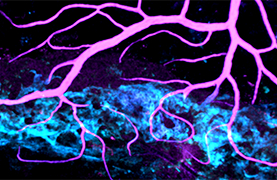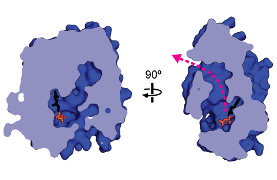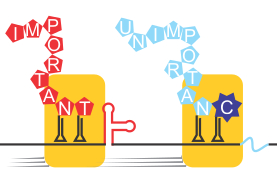This week in PLOS Biology
In PLOS Biology this week you can read about the development of a vital vessel in the eye, the structure of a protein involved in Vitamin K synthesis and how protein synthesis is maintained at both high accuracy and high speed.
Schlemm’s canal is a vital draining vessel which can be found in the eye, between the cornea and the lens. It collects aqueous humour and delivers it into the bloodstream: it is therefore vital for preventing the build-up of pressure associated with ocular hypertension and glaucoma. Despite its importance, little is known about its development. New research by Krishnakumar Kizhatil, Simon John and colleagues characterised Schlemm’s canal development, and in doing so discovered a novel process of vascular development. The cells of the canal express proteins characteristic of both blood and lymphatic vessels. Understanding these processes may lead to better understanding of the workings of the canal and how it can be manipulated to control glaucoma. Read more in the accompanying synopsis.
Hua Huang, Ming Zhou and colleagues have used x-ray crystallography to determine the structure of a member of the UbiA family of integral membrane proteins. The protein structures were for an archaeal homologue of UBIAD1 – an important enzyme that attaches prenyl groups during the synthesis of Vitamin K and Coenzyme Q in humans. Determining structure allows function to be predicted – in particular how the enzymatic mechanism works.
When cells are growing at a rapid rate, protein synthesis via ribosomal translation needs to be both rapid and accurate to sustain growth. New research by Jian-Rong Yang, Xiaoshu Chen and Jianzhi Zhang analysed datasets on the budding yeast Saccharomyces cerevisae. They propose that secondary structure in mRNAs modulates the speed of protein synthesis, therefore improving accuracy at functionally important sites while ensuring high speed elsewhere. They argue that this demonstrates the power of natural selection in mitigating efficiency-accuracy conflicts, which are prevalent in biology.



